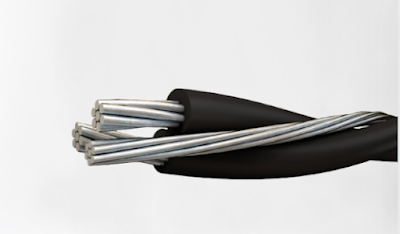The Importance of Mining Cable
Mining cables are specialized electrical cables intended for use in mining operations to provide power transmission and communication capabilities.
Type 241.1 cables bear extreme temperatures, dampness, chemicals, and mechanical stress—just a few of the severe circumstances that these cables are made to survive in mining operations.
They are critical to the effective and reliable operation of mining machinery, the powering of large machinery, and the facilitation of vital communication networks throughout the mining site. Mining cables are essential components that support the efficient running of mining operations because of their strength, safety features, and capacity for high voltage and current levels.
Importance of mining cables
Voltage and current capacity
Type 241 cables are made to manage the high voltage and current requirements placed on them by powerful mining equipment. They are designed to provide power efficiently by minimizing power losses during transmission.
These cables can transmit energy safely and reliably to power mining equipment since they are available in a variety of voltage ratings, which typically range from hundreds to thousands of volts.
Resistance to Mechanical Stress
Mechanical stress, vibration, and continual movement are all part of mining operations. Mining cables are made to survive these challenging circumstances.
They are made of durable materials that can survive physical abrasion, impact, and bending, such as premium copper or aluminum conductors and tough insulation.
The chance of cable damage or failure is decreased due to this mechanical stress resistance, which raises the overall dependability of the mining infrastructure.
Environmental protection
Type 241.1 cables survive in extreme environmental conditions, such as dust, wetness, chemicals, and temperature changes, which are present at mining sites. Mining cables are made with insulation and protective wrapping to protect them from these environmental elements.
They frequently offer long-term performance and protect the cable components from deterioration or corrosion by being resistant to moisture, oil, UV rays, chemicals, and other elements. In difficult mining conditions, the integrity of the cables must be maintained through environmental protection.
Improve safety
Mining cables put safety first by adding a number of measures to prevent electrical risks. For instance, they might feature shields or grounding conductors that diffuse electrical faults and lessen the chance of electric shocks.
Additionally, flame-retardant qualities, self-extinguishing qualities, and low-smoke, low-toxicity insulation materials can be added to mining cables. In the event of accidents or crises, these characteristics help limit the spread of fires and lessen the potential risk to personnel.
Long-distance power transmission
Mining operations can cover large areas, necessitating long-distance power transmission.
Mining cables are designed to reduce power losses over long distances and enable effective power distribution across the mining site.
In order to maintain voltage levels and reduce voltage drop, they contain low-resistance conductors and sufficient insulation, ensuring a dependable power supply even in outlying areas of the mining operation.
Standards
Mining cables must follow certain industry standards and rules to guarantee their performance, compatibility, and safety.
The National Electrical Code (NEC) and the International Electrotechnical Commission (IEC) standards are two examples of regionally specific standards. These standards must be followed in order for mining cables to function dependably and meet basic safety requirements.
Adaptable
Mining cables are adaptable and can be customised to meet particular mining needs.
According to the requirements of the mining operation, manufacturers can modify the properties of the cable, such as the conductor size, insulation thickness, shielding, and jacketing material, to maximise performance.
Due to this flexibility, mining firms can choose cables that are especially suited for their distinct applications, guaranteeing the highest levels of efficiency and dependability.
Maintenance
Regular maintenance and testing of mining cables are essential to finding any potential problems or performance degradation.
Early warning indicators of cable wear, damage, or deterioration can be found through inspections, cable integrity checks, and electrical testing.
Mining firms may lessen the possibility of unanticipated cable failures, cut downtime, and enhance overall operational safety and effectiveness by proactively addressing these problems.
Contact Znergy Cable for Mining Cable
Mining cables are specialized infrastructure elements that prioritize safety, uphold strict mining conditions, maintain communication capabilities, deliver dependable power transmission, and adhere to industry requirements.
They are essential for the mining industry because of their capacity for handling high voltage and current, resistance to mechanical stress and environmental variables, and customizable options.
Mining businesses may optimize their operations, improve safety, and maximize production in this demanding industry by spending money on high-quality mining cables and performing routine maintenance.
At Znergy Cable we are one of the leading mining cable manufacturers in Australia providing flexible electrical cable and electrical components to industries. Contact us for business inquiries.




Comments
Post a Comment